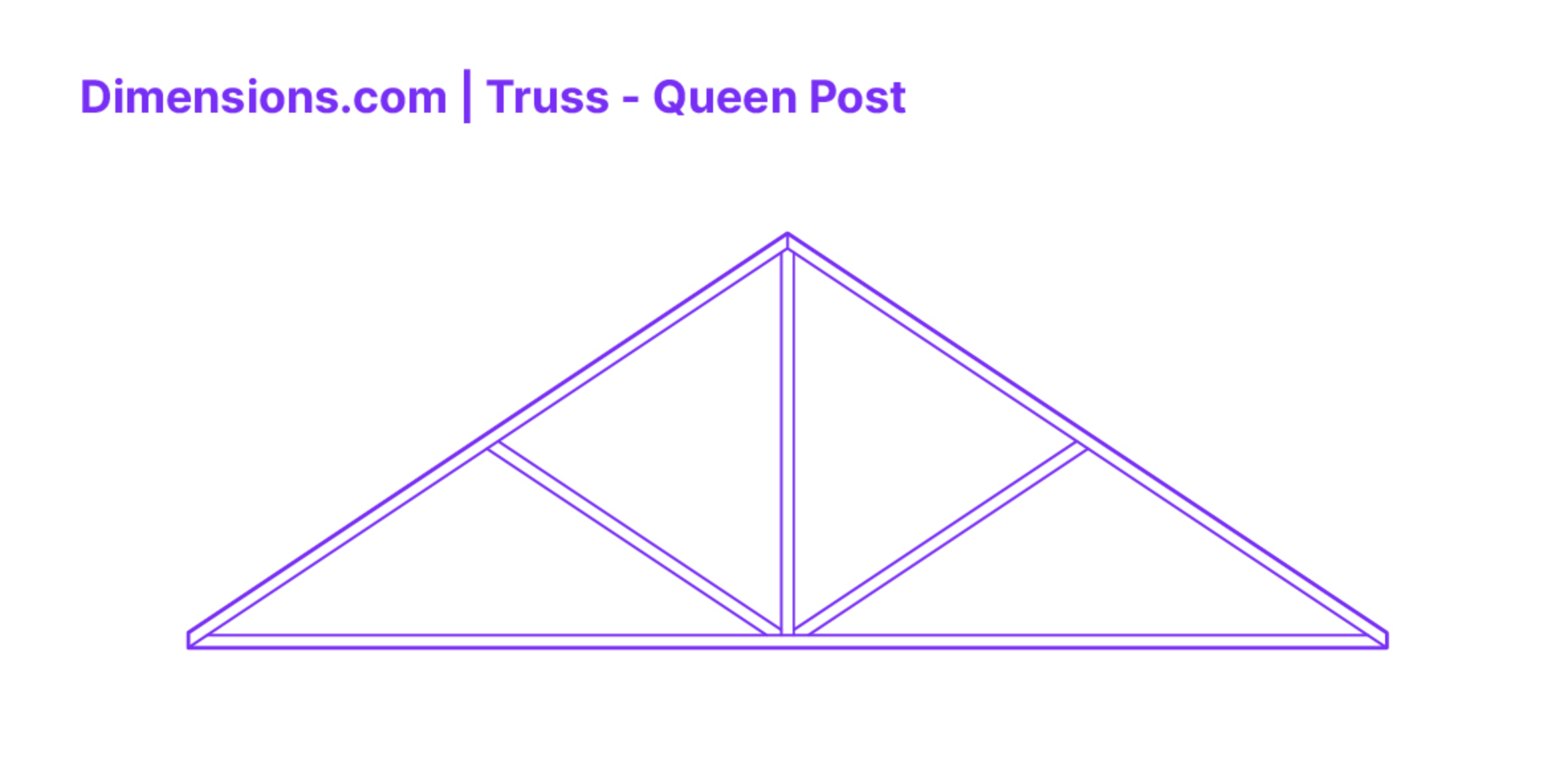Understanding the Main Types of Trusses and Their Purpose
Note: All truss diagrams source - dimensions.com
When it comes to constructing durable and aesthetically pleasing buildings, roof trusses play a crucial role. They are the backbone of a structure’s roofing system, ensuring stability and proper weight distribution. Whether you're involved in commercial, multifamily, or residential projects, understanding the types of trusses and their purposes can guide you in making informed decisions. This comprehensive guide will delve into the main types of roof trusses, their applications, and considerations for choosing the right truss for your project.
The Basics of Roof Trusses
What Are Trusses?
A truss is a structural framework of timbers or metal bars, designed to support the roof of a building. Trusses are engineered to carry heavy loads, distributing the weight evenly across the structure. They provide stability, strength, and flexibility, making them indispensable in modern construction.
Purpose of Trusses
In commercial, multifamily, and residential construction, trusses serve several key purposes:
Support the Roof: Trusses provide the necessary support to hold up the roof, ensuring longevity and safety.
Distribute Weight: By evenly distributing the weight of the roof, trusses prevent structural issues and ensure load-bearing walls and foundations are not overly stressed.
Design Flexibility: Trusses allow for greater design flexibility, enabling architects and builders to create innovative roof designs while maintaining structural integrity.
Types of Roof Trusses
Understanding the different types of roof trusses can help you choose the best option for your specific needs. Here are five main types:
1. King Post Truss
Description: The King Post truss is the simplest form of truss, consisting of two diagonal members meeting at a central vertical post (the king post).
Applications: Ideal for small spans, this truss is commonly used in residential construction for garages, sheds, and small extensions.
2. Queen Post Truss
Description: Similar to the King Post truss but with two vertical posts (the queen posts) connected by a horizontal beam.
Applications: Suitable for medium spans, often found in larger residential homes and commercial buildings.
3. Howe Truss
Description: Characterized by diagonal members sloping towards the center, with vertical members connecting them.
Applications: Commonly used in both residential and commercial buildings, particularly for longer spans where additional support is needed.
4. Scissor Truss
Description: Features a unique “scissor” shape, with two bottom chords crossing and connecting to the top chords.
Applications: Popular in residential construction for vaulted ceilings and open living spaces, offering both structural support and aesthetic appeal.
5. Fan Truss
Description: Consists of a series of diagonal members radiating out from a central point, resembling a fan.
Applications: Often used in commercial and multifamily buildings, providing strong support for large roofs.
The Most Commonly Used Trusses
Among the various types, the Fink Truss stands out as the most commonly used truss in modern construction. Its popularity is due to its versatility, strength, and cost-effectiveness. The Fink Truss is characterized by a web of diagonal members creating a series of triangles, which efficiently distribute weight and provide robust support. It is widely used in both residential and commercial projects for its reliability and ease of installation.
Different Truss Designs
In addition to the five main types, there are several other truss designs worth considering:
Source: Dimensions.com
1. Fink Truss
Description: Known for its triangular web configuration, offering excellent strength and stability.
Applications: Used in a variety of residential and commercial projects.
Source: Dimensions.com
2. Pratt Truss
Description: Features vertical and diagonal members slanting towards the center, creating a distinctive “Pratt” pattern.
Applications: Suitable for bridges and industrial buildings, where long spans are required.
Source: Dimensions.com
3. Warren Truss
Description: Characterized by equilateral triangles, providing a simple yet effective design.
Applications: Common in both residential and commercial buildings, especially for roofs and floors.
4. North Light Truss
Description: Consists of a series of intersecting members forming a triangular pattern.
Applications: Used in large industrial buildings and factories, where large roof spans are needed.
5. Parallel Chord Truss
Description: Features top and bottom chords running parallel to each other, connected by a web of diagonal members.
Applications: Ideal for flat roofs and floor systems in commercial buildings.
Considerations for Choosing Trusses
Selecting the right truss involves several factors, which can significantly impact the success of your project:
Load Bearing Capacity
Consider the weight the truss needs to support, including roofing materials, snow loads, and potential live loads. Ensure the chosen truss type can handle the required load without compromising safety.
Design Flexibility
Depending on the architectural design of your project, some trusses may be more suitable than others. For instance, scissor trusses are ideal for vaulted ceilings, while Fink trusses offer versatility for various roof shapes.
Cost
Budget constraints play a significant role in truss selection. While some trusses may be more cost-effective, ensure they do not compromise on quality and durability. Balancing cost with performance is key to a successful project.
Role of Stakeholders
The decision-making process should involve all key stakeholders, including architects, builders, and homeowners. Collaboration ensures that the chosen truss meets both structural and aesthetic requirements.
Choosing the right truss is a critical step in any construction project. Understanding the different types of trusses, their applications, and the factors to consider can help you make an informed decision. Whether you’re working on a commercial, multifamily, or residential project, selecting the appropriate truss will ensure the structural integrity and longevity of your building.
For more personalized advice and expert consultation, reach out to our team at Stockton & Carson Truss. We're here to help you navigate the complexities of truss selection and ensure your project’s success. Contact us today to get started!









